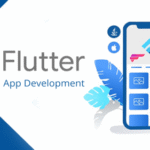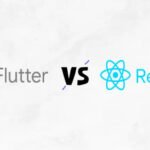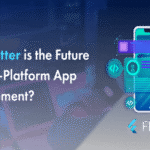Mobile AppHow Long Does It Take to Develop a Mobile App? Timelines Explained

Table of Contents
Introduction: Why Understanding App Development Timelines Matters
One of the most common questions we hear from clients is:
“How long will it take to build my mobile app?”
The answer isn’t one-size-fits-all. Multiple factors influence the total development time, from the complexity of the app to your team’s responsiveness. Setting realistic expectations is crucial—whether you’re a startup or an enterprise—because timelines affect budgeting, go-to-market strategy, and ROI.
In this blog, we break down everything you need to know about mobile app development timelines, including actual time estimates and actionable strategies to stay on track.
Key Factors Affecting Mobile App Development Time
Several key factors directly impact how long it takes to build your mobile app:
1. App Complexity
- Basic App (e.g., calculator, to-do list) – Few screens, minimal backend logic.
- Moderate App (e.g., eCommerce, booking apps) – Requires user authentication, payment gateways, database integration.
- Complex App (e.g., social media, ride-sharing) – Includes real-time features, AI integration, live chat, third-party APIs.
2. Platform Choice
- iOS App Development
- Android App Development
- Cross-platform (Flutter, React Native) – Often faster, cost-effective for MVPs.
3. Design Requirements
Custom animations, unique UI/UX designs take longer than using standard UI kits..
4. Third-party Integrations
- Payment gateways, social media logins, APIs like Google Maps—each integration adds to development time.
5. Team Size & Expertise
A skilled team can streamline processes without compromising quality.
6. Client Communication & Feedback Loops
Frequent, clear communication accelerates development by minimizing rework.
Mobile App Development Stages & Average Time Estimates
Let’s break down each phase with average timeframes:
Idea Validation & Research
Time Required: 1-2 weeks
Activities include:
- Market research
- Competitor analysis
- Defining core features
- Feasibility analysis
Pro Tip: Detailed documentation at this stage reduces back-and-forth later.
UI/UX Design Phase
Time Required: 2-4 weeks
Tasks:
- Wireframing
- User journey mapping
- Prototyping
- Visual UI design for each screen
Internal Link: Learn more about our Mobile App Development Process.
Development Phase (Frontend + Backend)
Time Required: 8-16 weeks (depending on complexity)
Frontend:
- Mobile screen development (Flutter/React Native/Swift/Kotlin)
- API integrations
- UI animations
Backend:
- Database setup (MySQL/MongoDB/Firebase)
- Server-side logic (Node.js, Python, PHP)
- Admin portal development
Testing & QA
Time Required: 2-4 weeks
Includes:
- Functional testing
- UI testing
- Cross-device compatibility
- Performance testing
- Bug fixing
Deployment & Launch
Time Required: 1 week
- Submitting app to Google Play Store / Apple App Store
- App store optimization (ASO)
- Post-launch monitoring
Simple Apps vs Complex Apps: Time Comparison Table
App Type | Features Example | Average Time Estimate |
Simple App | To-do list, calculator, basic content app | 2-3 months |
Moderate App | eCommerce, booking system, payment gateway | 4-6 months |
Complex App | Social media app, ride-sharing, AI-integrated platform | 6-9+ months |
Case Studies: Real-World Mobile App Development Timelines
Case Study 1:
Client Name: Confidential (Signed NDA)
Project: Restaurant Reservation App
Scope: Cross-platform app, table booking, in-app payments, loyalty rewards
Timeline Breakdown:- Research: 1 week
- Design: 3 weeks
- Development: 12 weeks
- QA: 3 weeks
- Launch: 1 week
Total Time: 20 weeks (5 months)
Result: Reduced customer wait times by 50%, boosted reservations by 40%.
Case Study 2:
Client Name: Confidential (Signed NDA)
Project: AI-Based Fitness Tracking App
Scope: Real-time activity tracking, personalized AI coach, wearable integration
Timeline Breakdown:- Research: 2 weeks
- Design: 4 weeks
- Development: 18 weeks
- QA: 4 weeks
- Launch: 1 week
Total Time: 6.5 months
Outcome: Gained 100K+ downloads within 6 months post-launch.
How to Speed Up Mobile App Development Without Compromising Quality
1. Start with an MVP (Minimum Viable Product)
Focus on essential features first, and roll out advanced features post-launch.
2. Choose Cross-Platform Frameworks
Using Flutter or React Native can reduce time compared to building separate native apps.
3. Use Pre-built Components & Libraries
Rather than reinventing the wheel, leverage reliable third-party libraries.
4. Agile Methodology
Break down development into short sprints, ensuring faster delivery of functional modules.
Common Delays in Mobile App Development & How to Avoid Them
Common Delay Cause | Solution |
Unclear requirements or changing scope | Detailed project documentation & change control process |
Delayed feedback from client | Weekly review meetings & dedicated communication tools |
Poor testing practices | Dedicated QA team with automated & manual testing |
Integration issues with third-party APIs | Early API feasibility checks & sandbox testing |
Design revisions in the middle of development | Sign off wireframes before development starts |
Conclusion: Planning for Realistic Timelines
Mobile app development is a detailed, iterative process influenced by various factors. While simple apps may take around 2-3 months, more complex apps can span 6-9 months. The key to timely delivery lies in:
- Clear goal setting
- Partnering with an experienced development team
- Effective communication
- Avoiding scope creep
Looking to get a realistic timeline for your app idea? Contact TechHeaders today for a detailed consultation.
FAQs
Can I reduce app development time by outsourcing?
Yes, outsourcing to a skilled team with a proven track record can streamline the process and reduce costs and time.
Which pricing model is better: Fixed or Time & Material?
Good design focuses on user experience, wireframes, and prototyping to prevent rework later—saving time overall.
How soon can I launch a basic MVP?
On average, an MVP can be launched within 2-3 months, depending on feature set




